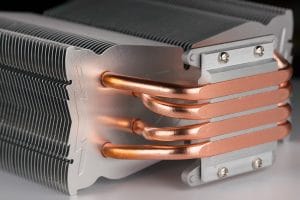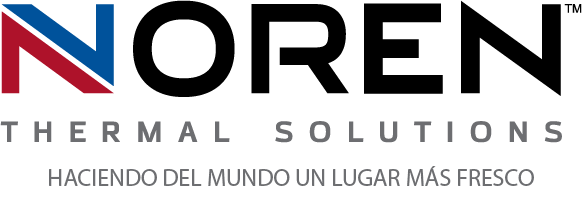 Electrical cooling comes in many forms these days, from air conditioning and air compressing units to more high-performance liquid cooling, and more. However, for many modern applications, the better solution isn’t a cooling one, but one that involves consistently transferring waste heat before it even has a chance to accumulate within an electrical enclosure. For a wide variety of applications in virtually every industry, the innovative heat transfer concepts that heat exchangers utilize provide a more reliable, efficient, and eco-friendly thermal management process than traditional cooling solutions.
Electrical cooling comes in many forms these days, from air conditioning and air compressing units to more high-performance liquid cooling, and more. However, for many modern applications, the better solution isn’t a cooling one, but one that involves consistently transferring waste heat before it even has a chance to accumulate within an electrical enclosure. For a wide variety of applications in virtually every industry, the innovative heat transfer concepts that heat exchangers utilize provide a more reliable, efficient, and eco-friendly thermal management process than traditional cooling solutions.
Considering electrical thermal management
For most electrical systems, sensitive components must be housed in enclosures. Traditionally, chilling or cooling those enclosures was the only way to prevent the waste heat generated by the electrical components from damaging them. The goal was to keep the temperature inside of the enclosures below the system’s maximum operating temperatures to avoid damaged components and system failures. Heat exchangers accomplish the same preventive goals, but do so by continuously transferring the waste heat rather than overcoming it through enclosure cooling. There’s no need to generate and circulate chilled air because the heat exchanger transfers and dissipates the waste heat before it can accumulate into heat pockets.
Thermal solutions for enclosures and more
Processes such as natural/forced convection and phase-change cooling make transferring heat significantly less costly and energy intensive than traditional cooling solutions. For example, heat exchangers don’t require substantial amounts of energy, and the units don’t consist of complicated external parts that could wear down and often require replacement. This simplicity, combined with the high-performance, highly customizable nature of heat exchangers, has made them vital thermal solutions for more than just electrical enclosures. For example, heat exchangers of all types are often utilized for thermal management processes such as food pasteurization, pharmaceutical manufacturing, aerospace and military applications, and more.
Advanced capabilities of customized heat transfer
By transferring heat instead of eliminating it through cooling or chilling methods, heat exchangers open up several other energy and cost-saving capabilities for companies. For instance, utilizing the heat that the units collect for processes like wastewater treatment can help companies save even more on energy while also lowering their environmental footprints. These and similar heat transfer concepts have also provided the framework for several burgeoning green energy technologies as a resource for distributing stored heat and energy. To learn more about the difference between cooling and more eco-friendly heat transfer concepts, call Noren Thermal Solutions in Taylor, TX, at 866-936-6736.







